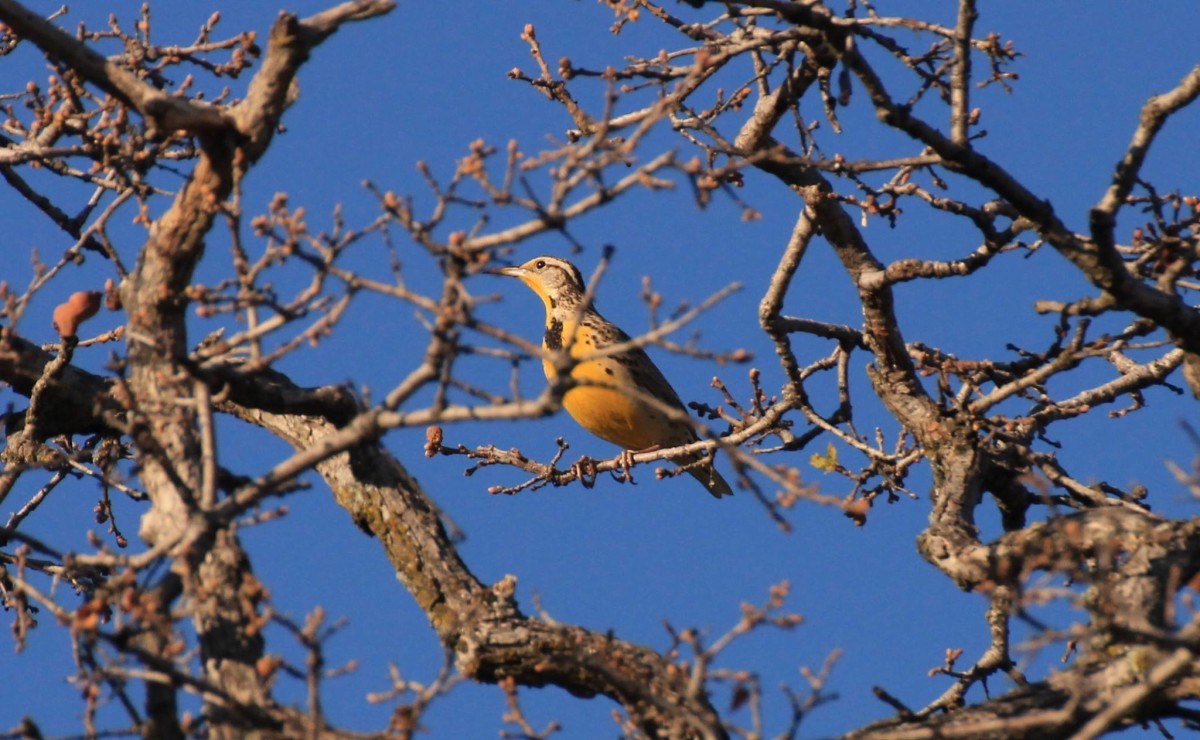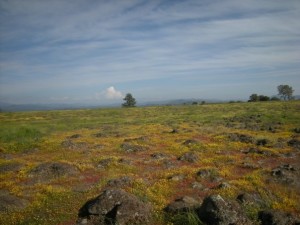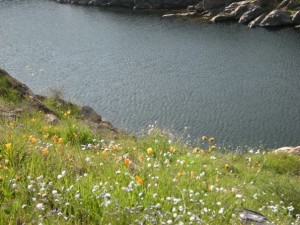The Sierra Nevada and foothills are getting another round of moisture, and El nino is making for a great wildflower season already this spring!
Even the birds are taking advantage of the bloom! If you get the chance to get out when the sun emerges from the clouds, visit one of these three wildflower hotspots: Knight’s Ferry , Red Hills and Table Mountain. All three offer great wildflowers, and the option of a short walk or a longer hike. Click on the pictures below for more information about how to access these great areas and enjoy spring wildflowers and birds in the Northern Yosemite region!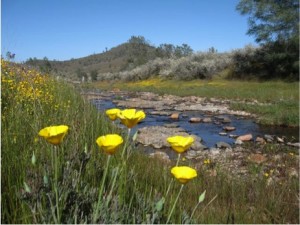
Red Hills ACEC
Table Mountain
Knight’s Ferry
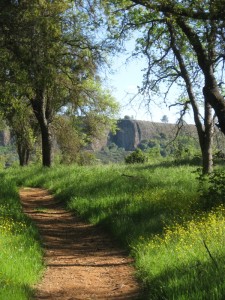
I recently spent some time checking out the earliest bloomers on Table Mountain, and was treated to the company of many flocks of larks and sparrows, and even the unpredictable and elusive Lawrence’s goldfinch!
Although most vehicles with clearance can make the drive down the muddy Shell Road, I recommend parking at the cattle guard and yellow gate and walking the trail through the oak woodland. The trail is through a gate on your right just before the cattle guard. Please close the gate behind you !
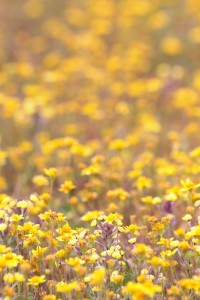
Once you reach the parking area for those who drove on the dirt road past the yellow gate, there is a trail that climbs to the top of the volcanic Table Mountain. Take a good look at the buck brush flowers – they are a part of the wild lilac, or ceanothus, family which all share the same unique style of flower. Did you notice the spoon shaped petals that extend from the individuals flowers? This is a trademark of ceanothus flowers! Other flowers like the deep pink spicebush flowers are hard to miss reaching into the trail, and the bright western wallflower will catch your attention standing tall through the oak trees and poison oak.
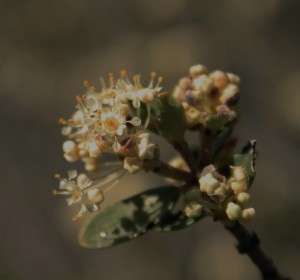
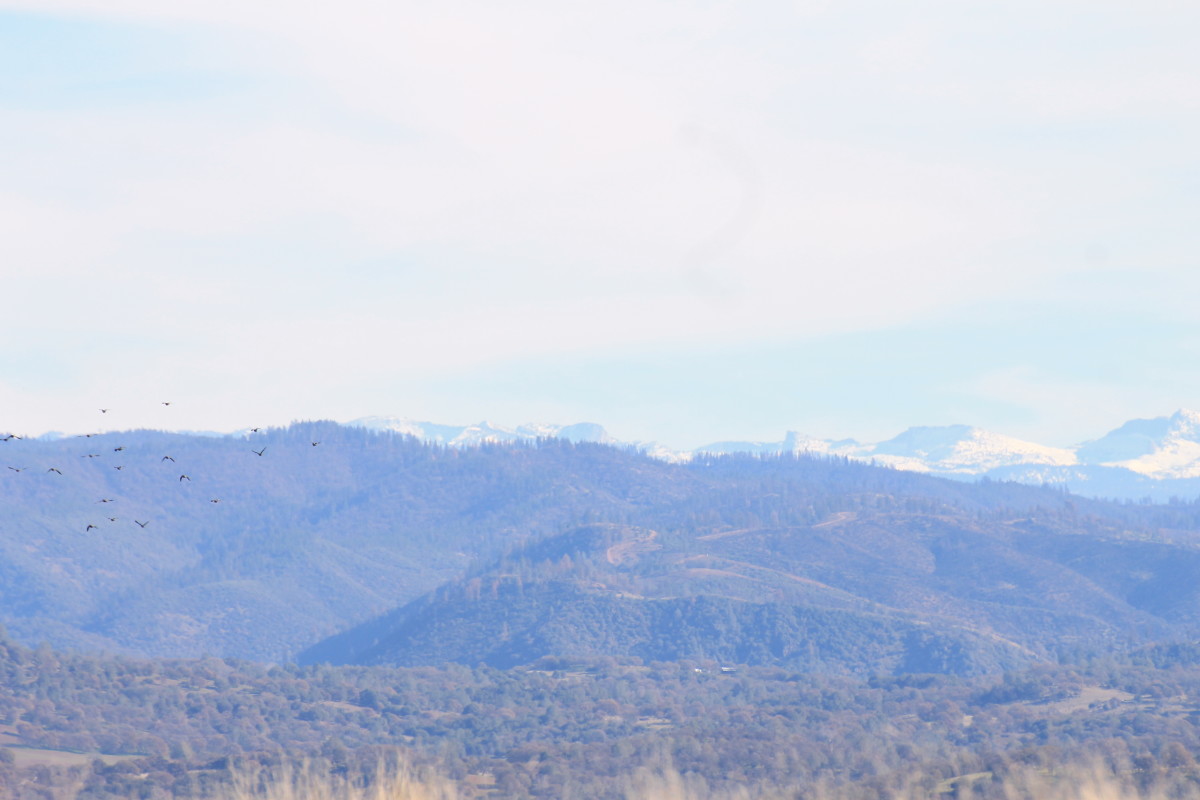
As you come over the edge of Table Mountain, you are greeted with a field of flowers leading to the spectacular backdrop of the snowy Sierra Nevada. Views to the east reveal the snow covered Sierra Nevada, including high peaks in Yosemite.
Goldfields blanket the ground first, with blennosperma and monkeyflower appearing sporadically amongst the mounds of lichen coated volcanic rock. The grassy knolls support clusters of purple lupine later in the spring.
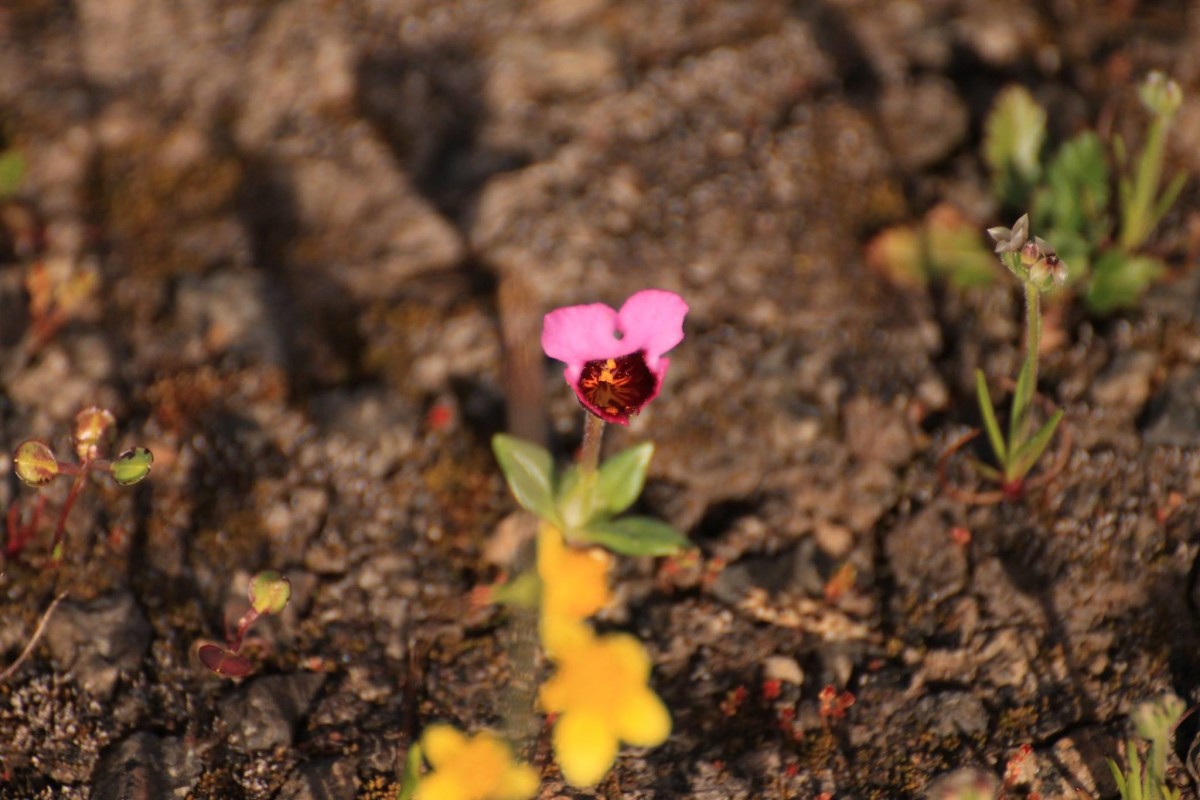
Monkeyflower
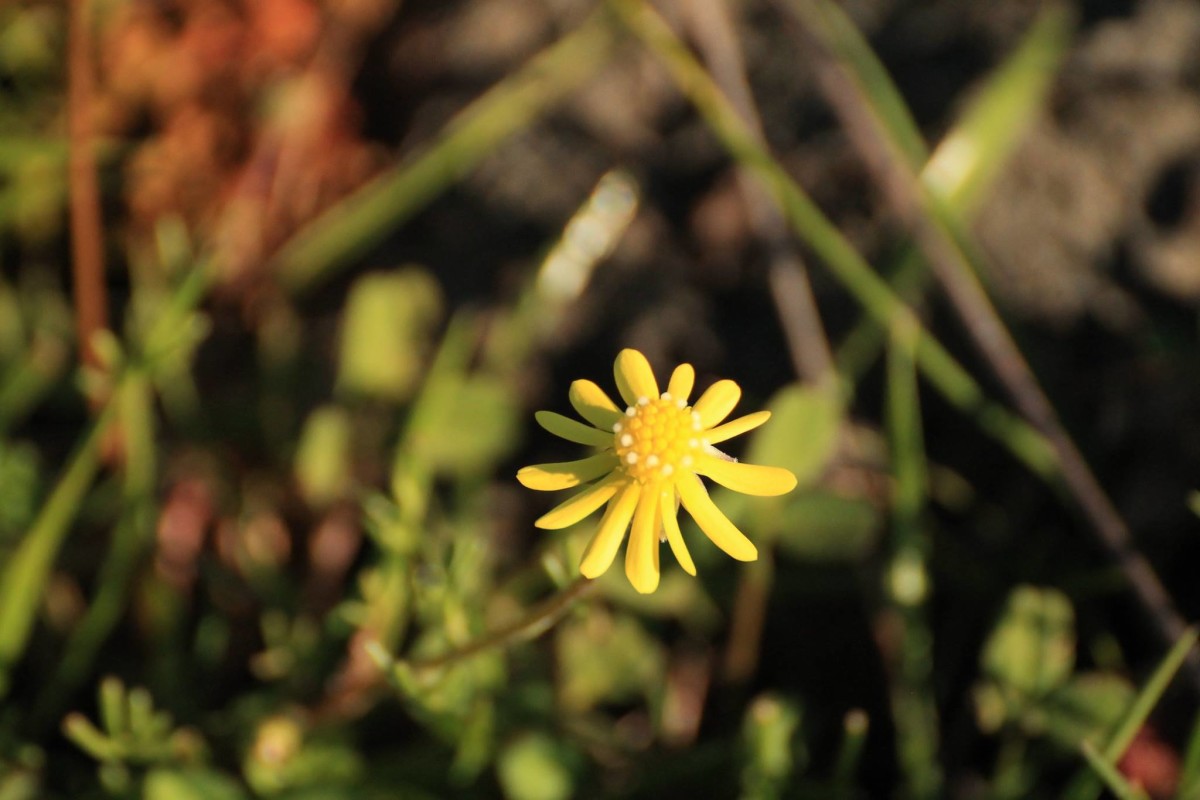
Blennosperma
If you look closely and stay still, perhaps you will notice movement among the goldfields … aha – a lark! During the 8 hours I spent wandering the mountaintop, I encountered flocks of horned lark and meadowlark. They are difficult to spot as they are both predominately yellow birds foraging amongst the blanket of yellow goldfields!
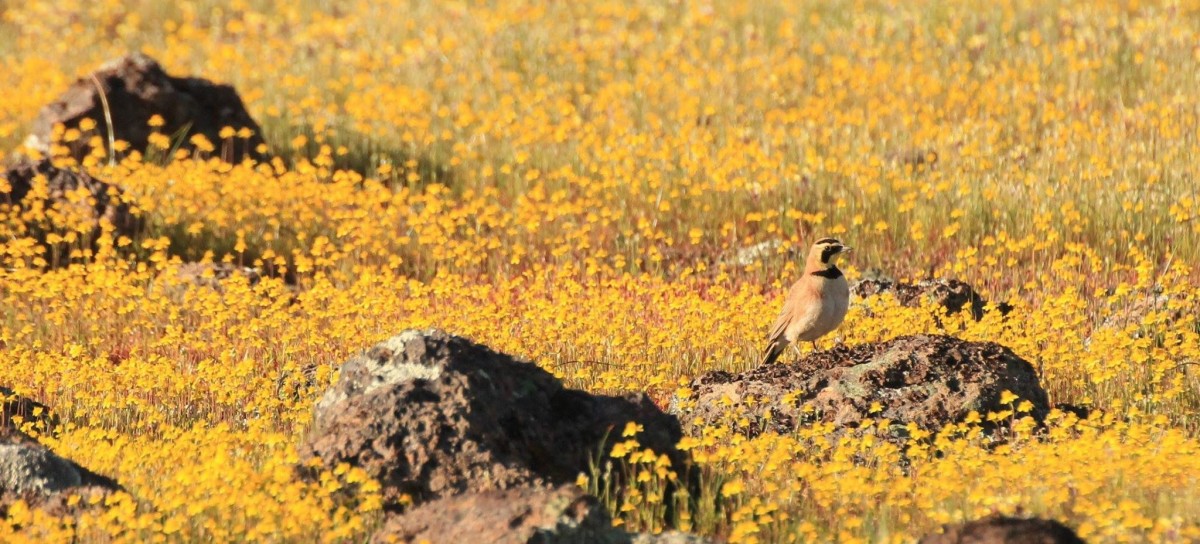 While I was stalking the larks, I sought shelter behind some brush and found myself face to face with a small flock of Lawrence’s goldfinch. These little birds are unpredictable visitors to the foothills and Sierra, so I consider it a rare treat to encounter them, especially so closely. They resemble our other goldfinches, but they have a black throat, and look as if they’ve dipped their face into an inkwell!
While I was stalking the larks, I sought shelter behind some brush and found myself face to face with a small flock of Lawrence’s goldfinch. These little birds are unpredictable visitors to the foothills and Sierra, so I consider it a rare treat to encounter them, especially so closely. They resemble our other goldfinches, but they have a black throat, and look as if they’ve dipped their face into an inkwell!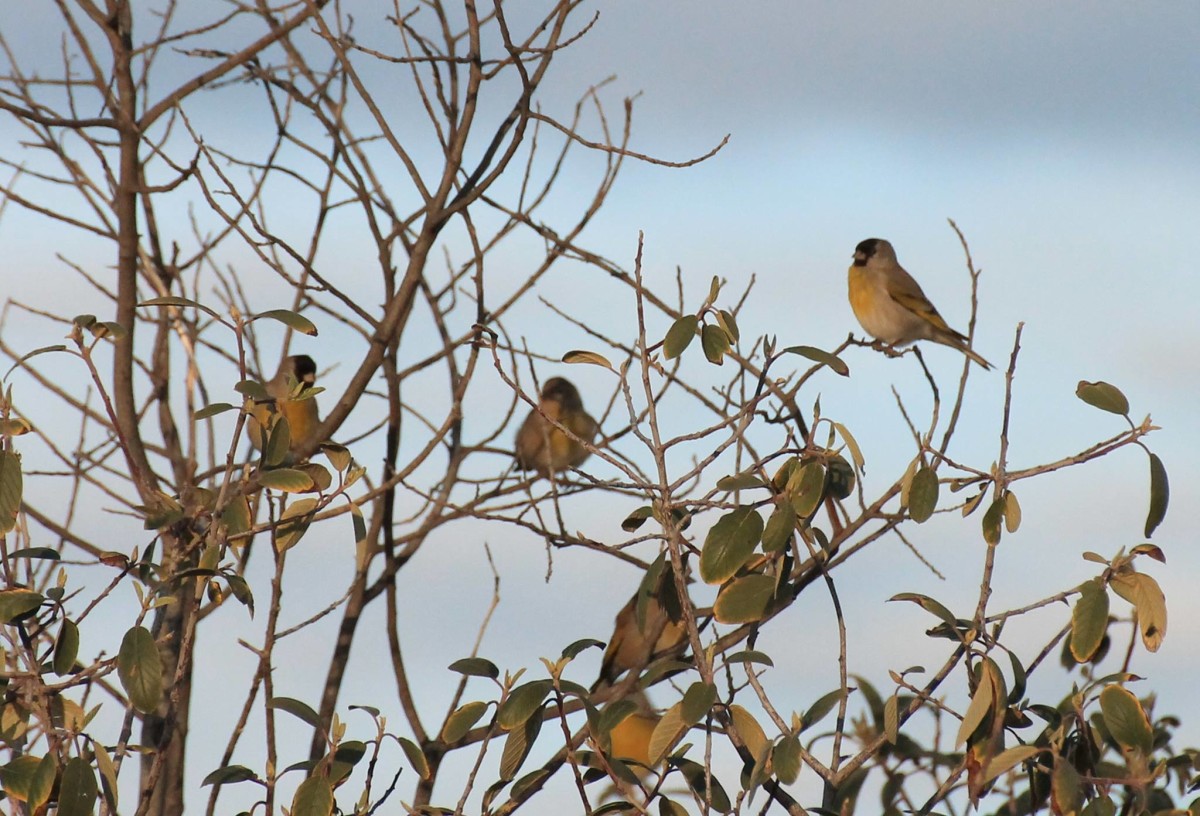
Chasing the bloom from the foothills starting in March to the tops of the highest peaks in August is one of my favorite things about living in the Sierra Nevada. I find myself at the same wildflower hotspots in the early spring, in part because they are spectacular destinations. However, this is also a reflection of the limited amount of low elevation public lands that are available for recreation. Visiting these places truly makes me grateful for all of the effort that has gone into protecting open space in the foothills from the threats of development.
Hopefully this gives you a bit more inspiration to go chase the wildflower bloom this year – the rain promises to reward you, as you can see it already has rewarded me!
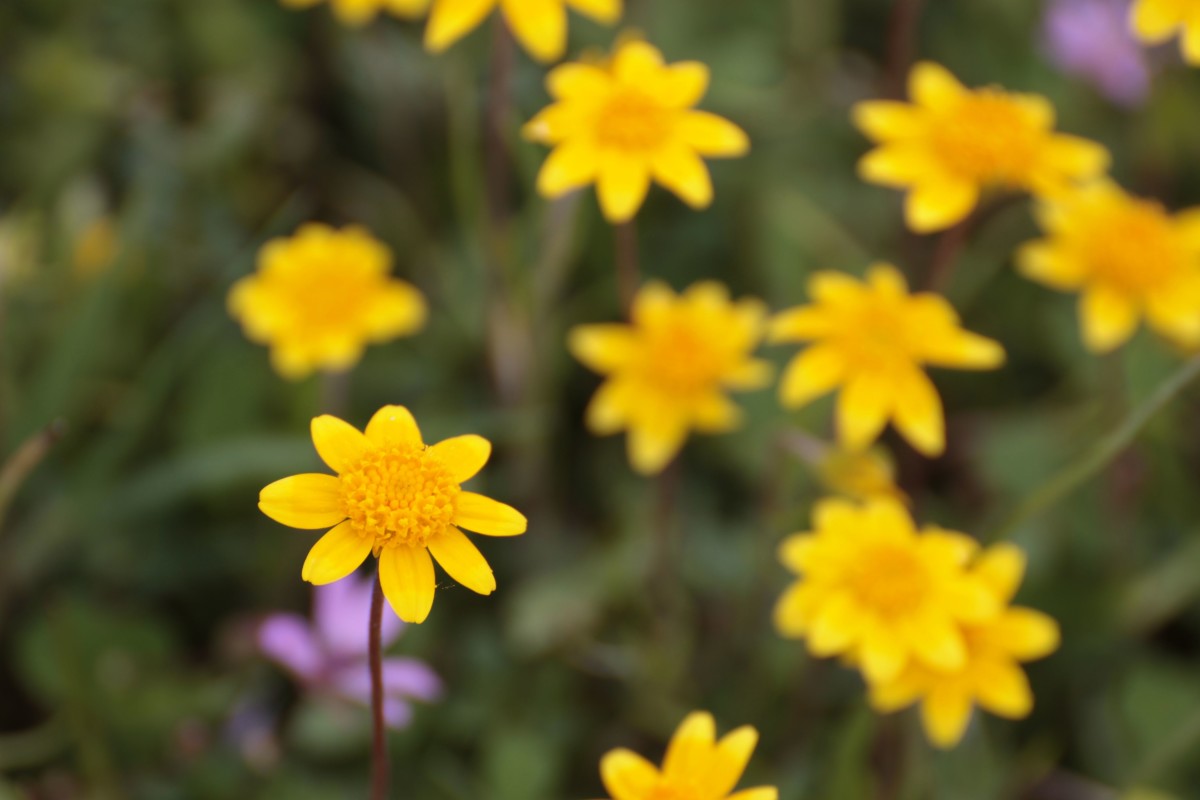
-Megan, CSERC Blogger
